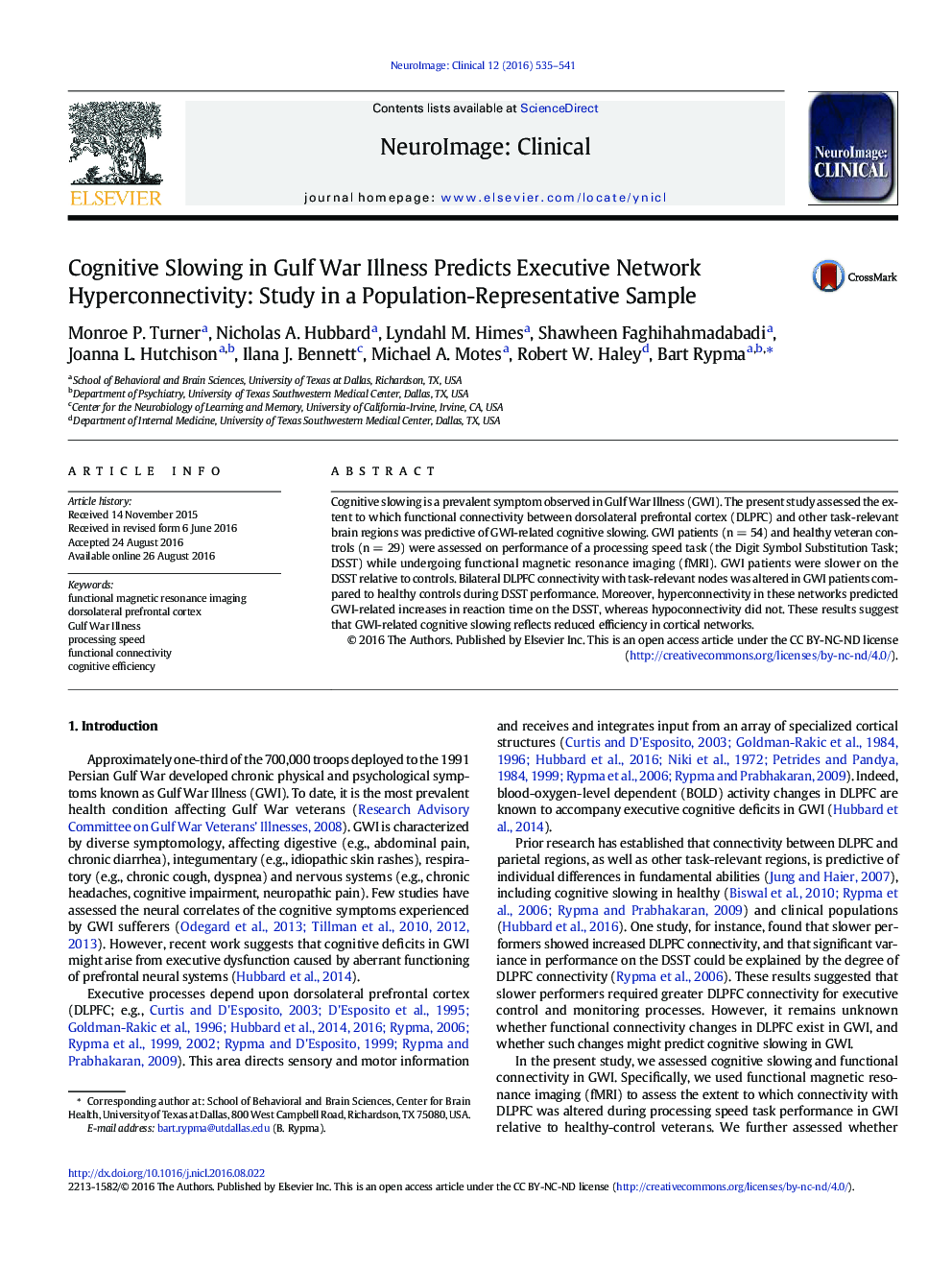| Article ID | Journal | Published Year | Pages | File Type |
|---|---|---|---|---|
| 3074842 | NeuroImage: Clinical | 2016 | 7 Pages |
•This study used functional magnetic resonance imaging to assess the relationship between cognitive slowing in Gulf War Illness (GWI) and networks connected to dorsolateral prefrontal cortex (DLPFC)•GWI patients performed more slowly on a processing speed task than healthy veteran controls•Increased functional connectivity with DLPFC predicted reductions in processing speed in GWI patients, where decreased functional connectivity did not•Results suggest that executive-network hyperconnectivity is associated with reduced network efficiency and cognitive slowing in GWI patients
Cognitive slowing is a prevalent symptom observed in Gulf War Illness (GWI). The present study assessed the extent to which functional connectivity between dorsolateral prefrontal cortex (DLPFC) and other task-relevant brain regions was predictive of GWI-related cognitive slowing. GWI patients (n = 54) and healthy veteran controls (n = 29) were assessed on performance of a processing speed task (the Digit Symbol Substitution Task; DSST) while undergoing functional magnetic resonance imaging (fMRI). GWI patients were slower on the DSST relative to controls. Bilateral DLPFC connectivity with task-relevant nodes was altered in GWI patients compared to healthy controls during DSST performance. Moreover, hyperconnectivity in these networks predicted GWI-related increases in reaction time on the DSST, whereas hypoconnectivity did not. These results suggest that GWI-related cognitive slowing reflects reduced efficiency in cortical networks.
